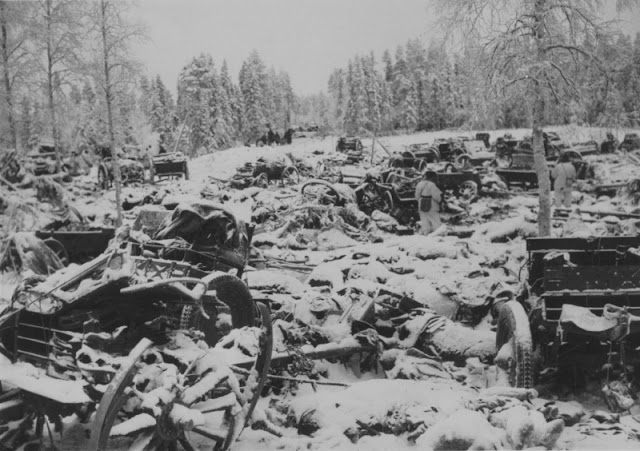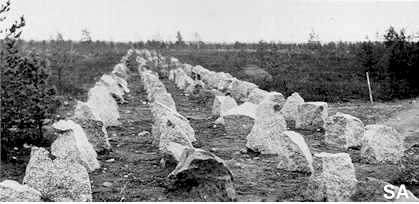Wednesday 7 August 1940
 |
| Prime Minister Winston Churchill inspects 9.2-inch guns of 57th Heavy Regiment, Royal Artillery during a tour of East Coast defenses, 7 August 1940. |
German radio claims that the Luftwaffe has closed to the English Channel to British shipping. This is not strictly true, although the remaining daily convoys have been taking horrendous losses. In fact, many convoys have been re-routed north around Scotland. The remaining ships are almost exclusively colliers whose cargo is not considered a priority - there is always more coal to be dug - and the Admiralty refuses to admit that it cannot protect shipping right offshore of England. It convenes a meeting of ship captains and tells them in no uncertain terms:
We don't give a damn for your coal, we'd send you through empty if we had to. . . It's a matter of prestige.Really, that is what war comes down to in the end. You can practically see them raising their middle fingers at the Germans.
 |
| The attack by the Fleet Air Arm on oil installations at Dolvik, five miles south of Bergen, Norway. © IWM (A 3595) |
Luftwaffe raids are few and scattered today despite decent flying weather. There is an attack on the convoy off Cromer, but no damage results. The intrusions are more for nuisance value, often lone raiders designed to wear out the defending RAF fighters, and a gradual shift toward nuisance night attacks (keeping people across the country awake, wearing out the defenders) is becoming obvious. It is easy to make light of these raids, but one bomber can do a lot of damage if it hits sensitive structures and the incident can be long-remembered regardless. Tonight, for instance, Exeter in Devon is bombed for the first time by one bomber which does little damage.
Pilot Officer D. Smith of 616 Squadron perishes when he crashes his Spitfire during the night at Leconfield and is killed.
Hauptmann Karl Valesi of 3./Epr.Gr 210 is killed in a plane crash at St. Omer. He is on special attachment to the unit and is not, as many sources claim, the Staffelkapitän, who remains Oblt. Otto Hintze.
Major Werner ‘Vati’ Mölders, Kommodore of JG 51, returns from his hospital stay that resulted from his recent leg wound. Mölders does not have medical clearance but returns anyway. Just because he has been wounded does not make him "soft" - he immediately turns down a request for a pilot to receive leave to get married, telling him to wait for the final victory over England.
During the day, RAF Bomber Command attacks JG 54's base at Haamstede, causing significant damage but killing no Luftwaffe pilots. The British bombers also attack the airfield at Cherbourg again. During the night, they attack the usual suspects such as Emmerich, Kiel dockyard facilities, oil installations at Hamm and Hornburg, and various airfields in northwest Europe.
Fleet Air Arm Blackburn Skuas attack oil installations at Bergen, Norway. A few observations about this particular raid:
- Bergen is being used as a major U-boat base;
- Depriving the U-boats of oil would crimp their patrols and make the Royal Navy's job easier;
- The Royal Navy would be much more interested in prioritizing the destruction of U-boat oil supplies than would Bomber Command, because Bomber Command has a strategic, and sometimes parochial, perspective with numerous inviting and deserving targets scattered all across Europe;
- Thus, the Fleet Air Arm makes the attack.
 |
| Another view of the day's Dolvik/Bergen raid. © IWM (A 3590) |
Kriegsmarine 7381-ton anti-submarine trawler Wiking (VP 1501) hits a mine and sinks in shallow water near Frederickshaven but appears salvageable.
Convoys OA 195 and MT 133 leave Methil, OB 195 departs from Liverpool, Convoy FN 245 departs from Southend, Convoy FS 245 leaves the Tyne.
The Kriegsmarine lays mines in the North Sea and all along the English coast.
German raider Orion, operating in the Pacific, refuels from the Winnetou.
U-140 (Oberleutnant zur See Hans-Peter Hinsch) is commissioned.
Battle of the Mediterranean: The RAF bombs Italian positions at Bardia and Massawa.
The Malta authorities reorganize the ground troops. The Malta Infantry Brigade is broken up into two new units, the Northern Infantry Brigade (Brigadier W H Oxley MC) and the Southern Infantry Brigade (Brigadier L H Cox MC). The day is quiet save for an Italian reconnaissance flight across the island at first light.
British submarine HMS Pandora, which brought in needed supplies on the 6th, departs today.
British Somaliland: The 2nd Black Watch Battalion (73rd Regiment) completes its cross-over from Palestine to British Somaliland to aid in the defense. The 1st Battalion, 2nd Punjab Regiment arrives from Aden.
Anglo/Japanese Relations: British Foreign Minister Lord Halifax joins with US Ambassador to Tokyo Joseph Grew in cautioning the Japanese about adventurism in French Indochina (Vietnam).
 |
| Another view of the day's Dolvik/Bergen raid. © IWM (A 3596). |
German/French Relations: The Germans complete the annexation of Alsace/Lorraine. This may sound insignificant because the Germans control it regardless, but that region has been an eternal area of dispute between the two countries and its annexation could be considered to be a major German war aim.
British Government: The government is manufacturing Molotov Cocktails for Home Guard use.
American Military: The subject of conscription continues to be debated in Congress.
Destroyer USS Grayson is launched.
British Government: Frank Pick becomes the new Director-General of Information, replacing Sir Kenneth Lee.
Middle East commander General Wavell completes his journey to London from Alexandria via Malta after his plane survives multiple Luftwaffe attacks.
General Cunningham assumes command of the 51st Infantry Division.
Australia: The government requisitions Alanzo Sparkes' paddock in Chermside. The plan is to build a military camp there.
Belgian Homefront: The war has devastated the harvest throughout the Low Countries, making food a valuable commodity. There are reports of Wehrmacht troops raiding houses for food. The British blockade is making the food situation much worse. There remains much controversy in the press about whether the British will allow humanitarian aid to the starving peoples of Europe.
American Homefront: It is hurricane season in the Caribbean, and a hurricane makes landfall at Sabine Pass, Texas.
Future History: Jean-Luc Dehaene, a future Prime Minister of Belgium, is born in Montpellier, France. He passes away in 2014.
 |
| Headlines for 7 August 1940. |
August 1940
August 1, 1940: Two RN Subs Lost
August 2, 1940: Operation Hurry
August 3, 1940: Italians Attack British Somaliland
August 4, 1940: Dueling Legends in the US
August 5, 1940: First Plan for Barbarossa
August 6, 1940: Wipe Out The RAF
August 7, 1940: Burning Oil Plants
August 8, 1940: True Start of Battle of Britain
August 9, 1940: Aufbau Ost
August 10, 1940: Romania Clamps Down On Jews
August 11, 1940: Huge Aerial Losses
August 12, 1940: Attacks on Radar
August 13, 1940: Adler Tag
August 14, 1940: Sir Henry's Mission
August 15, 1940: Luftwaffe's Black Thursday
August 16, 1940: Wolfpack Time
August 17, 1940: Blockade of Britain
August 18, 1940: The Hardest Day
August 19, 1940: Enter The Zero
August 20, 1940: So Much Owed By So Many
August 21, 1940: Anglo Saxon Incident
August 22, 1940: Hellfire Corner
August 23, 1940: Seaplanes Attack
August 24, 1940: Slippery Slope
August 25, 1940: RAF Bombs Berlin
August 26, 1940: Troops Moved for Barbarossa
August 27, 1940: Air Base in Iceland
August 28, 1940: Call Me Meyer
August 29, 1940: Schepke's Big Day
August 30, 1940: RAF's Bad Day
August 31, 1940: Texel Disaster
2020







